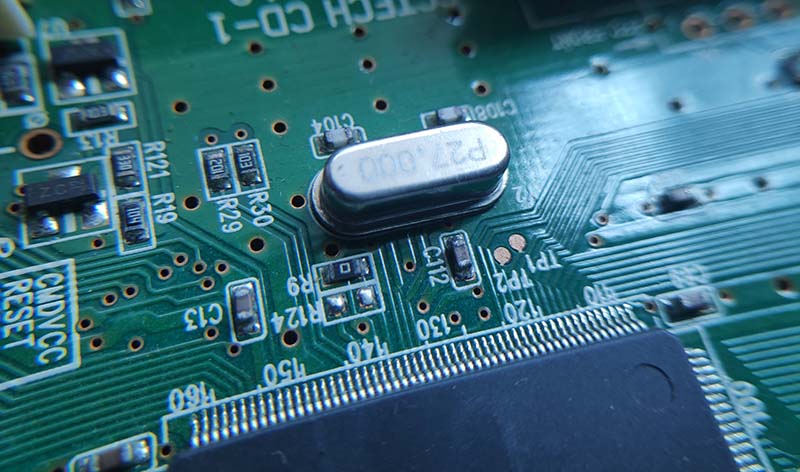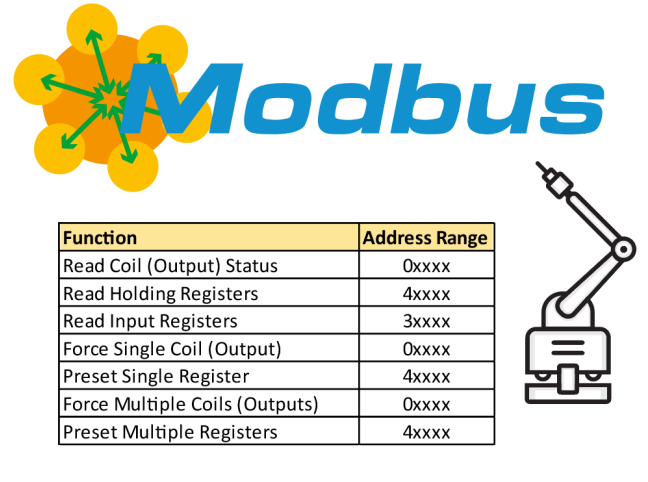In industrial automation, seamless device communication is critical. One of the most trusted tools facilitating this connectivity is Modbus, a protocol that has stood the test of time. But what is Modbus, and why is it still widely used in modern industrial systems?
In this guide, we’ll break down the Modbus communication protocol, how it works, and where it’s commonly applied. Plus, we’ll cover how Open Automation Software makes integration easier than ever.
What is Modbus?
Modbus is a serial communication protocol developed by Modicon in 1979 to enable communication between programmable logic controllers (PLCs). It allows multiple devices connected to the same network to exchange information in a standardized format.
In simple terms, Modbus enables a Modbus Master (usually a central controller or computer) to request data from or send instructions to Modbus Slaves (sensors, actuators, or other peripheral devices). A typical setup includes one Master and up to 247 Slaves, each with a unique address.
A Brief History of Modbus
To understand what the Modbus protocol is all about, it’s helpful to look at its origins. In the late 1960s, Modicon developed the first PLC at General Motors’ request. By the late 1970s, the need for these devices to communicate became apparent. While multiple companies attempted to develop their own solutions, Modicon’s release of the Modbus protocol became a milestone in automation history.
By making Modbus an open standard, Modicon allowed developers worldwide to integrate the protocol into their hardware and software products without licensing fees. This led to its wide adoption across industries, where it remains popular due to its simplicity and reliability.
Common Uses for Modbus
So, what is a Modbus protocol used for in real-world scenarios?
Modbus is an open protocol platform, meaning manufacturers can build their equipment free of charge without needing to pay royalties. It has become a standard communications protocol in the sector, and it is a common means for connecting industrial electronic devices.
Modbus is commonly used in industrial environments to connect instruments such as temperature sensors, flow meters, and human-machine interfaces (HMIs) with control systems. Its primary function is to transmit signals from control devices to centralized controllers or data acquisition systems.
For instance, a Modbus-enabled temperature sensor might collect readings and send them to a PLC, which then makes adjustments or triggers alarms based on that data.
Understanding How Modbus Works
Modbus is generally transmitted over serial lines between devices. The most straightforward setup involves a single serial cable that is connected to serial ports on two devices: a Slave and a Master.
The data will be sent as a series of zeroes and ones called bits. Each bit is sent as a voltage. Zeroes are sent as positive voltages, and ones are sent as negatives. The bits are sent in very high quality. A standard transmission speed is typically 9600 baud (bits per second).
The Modbus Organization, Inc.
Since 2004, The Modbus Organization, a non-profit group of users and developers, has overseen the evolution of Modbus. Their goal is to promote widespread adoption of the protocol by supporting education, development, and interoperability standards.

Types of Modbus Protocols
Today, Modbus exists in several variations to support different applications and media types. The three most commonly used are:
Modbus RTU
Modbus RTU is a type of serial Modbus. This transmission mode encodes messages as bytes that are sent one after the other without any spaces between them, though a 3-½-character space inside acts as a delimiter between messages.
For each eight-bit byte: one start bit, eight data bits, one bit for parity, and one stop bit are sent, for a total of 11 bits per byte. Every Modbus RTU message is ended with an accompanying error checksum in what is called a cyclic redundancy check (CRC).
Modbus ASCII
The Modbus ASCII protocol initiates every message with a colon “:” character. An ASCII carriage return/line feed (CR/LF) character ends every message transmission. This provides variability in what is being communicated with more spacing in between the bytes, giving it the ability to transmit through certain modems.
ASCII characters are used to communicate this data. For each eight–bit byte, one start bit, seven data bits, one bit for parity, and one stop bit are sent, for a total of 10 bits. Modbus ASCII messages are ended with an error checksum called a longitudinal redundancy check (LRC).
There are pros and cons to be weighed when using either of these two types – Modbus RTU and Modbus ASCII – as Modbus ASCII is much simpler to read by just looking at the message, but the RTU messages are much smaller, allowing for an enormous amount of data to be communicated in the same amount of time. Modbus RTU is used most commonly.
Modbus TCP
Modbus TCP is different in that it does not require a checksum, but is basically the RTU protocol running on Ethernet and a TCP interface. The TCP port 502 is reserved for Modbus, while the new Modbus/TCP Security uses Port 802.
Much more on this can be found at Modbus.org.
Modbus Protocols and IoT
Despite its age, Modbus remains a cornerstone of industrial control systems. It’s used in PLCs, distributed control systems (DCS), variable frequency drives (VFDs), and more.
With the rise of IoT (Internet of Things) and IIoT (Industrial IoT), Modbus has proven adaptable. It continues to power real-time automation for everything from factory machines to smart thermostats.
Rather than being replaced by newer technologies, Modbus is increasingly integrated into them, providing a bridge between legacy systems and modern IoT platforms.
There are now several software companies providing solutions for Modbus and IoT integration, but only one of them has the experience and reliability to liberate your data with unparalleled connectivity: Open Automation Software.

Open Automation Software Modbus IoT Data Connector
The OAS Modbus IoT Data Connector provides a direct connection to Modbus slave devices and the ability to host data to Modbus masters with the built-in Modbus Driver Interface. The Modbus Driver Interface supports communications over Ethernet and Serial interfaces with Modbus TCP, Modbus RTU, and Modbus ASCII protocols.With Modbus Automation Software from OAS, businesses will find the easiest process for adding Modbus communications in Real-Time Automation on the market – with one click of a button! Three of the most widely used Modbus Protocols can then be seamlessly implemented – Modbus TCP, Modbus RTU, and Modbus ASCII protocol – onto both Ethernet and Serial Port interfaces with the Modbus Master connection. Modbus TCP over Ethernet and Modbus RTU and ASCII over Serial Ports with the Modbus Slave connection.
After a quick and easy setup, the communication speeds you experience while running multiple Ethernet connections are at the fastest possible, with update rates averaging 15 milliseconds per packet. Data from anywhere, to anywhere, is sent in real-time with direct access to Modbus-compatible devices. A PC and a standard internet connection are all that is required to host live Modbus data. Remote data logging is also made highly secure, and backup devices can be optionally defined with Automated Communications Failover.
The ease of access for Modbus IoT Data Connector isn’t limited to only a few operating systems, either. Supported systems include Windows PC/Server, Windows Embedded, Windows IoT, Linux Server, Virtual Machines (Win/Linux), Raspberry Pi 4, and Docker Containers (Win/Linux).
The OAS Platform: Full Connectivity
Open Automation Software began 28 years ago with the philosophy that user interfaces and database archiving software should be open, far-reaching, and provide easy implementation and cost-effectiveness for consumers. An Open Architecture plan allows unparalleled customization with open accessibility to third-party reporting systems, .NET applications, web interfaces, open standards like OPC UA and MQTT, and even remote Microsoft Excel workbooks.The nature of the OAS Platform empowers you with flexibility. Purchasing the Universal Data Connector in combination with connectors for devices, databases, applications, IoT services, and more will give you the most powerful and versatile framework for enterprise systems integration. The built-in compatibility with other developer tools and APIs gives you an unlimited number of options for customization and automation.
The full range of products include:
Universal Data ConnectorThe core of the OAS Platform, the UDC is a Windows based program allowing it to be implemented in several different ways. Enable data connectivity, server-to-server networking, and more.
Data Historian
Log data in open format to MS SQL Server, Oracle, mySQL, PostgreSQL, InfluxDB, MongoDB, SQLite, MariaDB, Access, SQL Azure, Amazon Aurora, Amazon RDS, and CSV files.
Alarm Logging & Notification
Log events to open databases, and send notifications via SMS, email, and voicemail.
Device & Data Connectors
Read and write data to Allen Bradley, Siemens, and Modbus devices, Universal Drivers, OPC, OPC UA, databases, and Excel. Read MTConnect.
IoT Connectors
Connect to cloud-based IoT gateways such as AWS, Azure IoT, and MQTT Brokers.
Visualization Tools
Build custom Visualizations, User Interfaces, HMIs and Dashboards for Windows, web, as well as native iOS and Android devices.
SDKs & APIs
Develop custom automation apps for Windows, web, and mobile devices. Integrate with .NET and REST APIs. Build custom integrated device drivers.
Networking Features
Provides the most robust, scalable, and reliable distributed networking platform for IIoT solutions.
